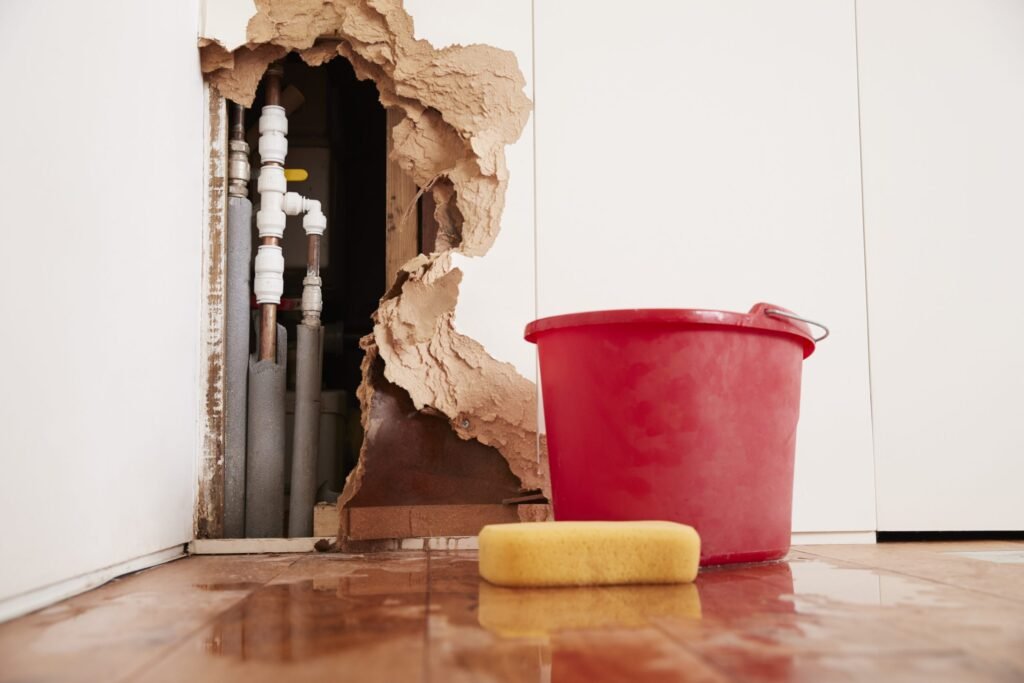When disaster strikes, whether from a burst pipe, a flood, or an unexpected plumbing failure, quick action is crucial to minimize damage and restore normalcy. To prevent such disasters in the first place, it’s essential to maintain proper drainage systems, ensuring water flows away from vulnerable areas. Two industries that often intersect in their missions to protect properties and restore functionality are water damage restoration and plumbing services. While their roles may seem distinct at first glance, these industries share common goals and collaborate in many scenarios to address property emergencies.
The Connection Between Water and Plumbing Emergencies
Water-related issues in properties often stem from plumbing failures. A leaking pipe, clogged drain, or malfunctioning water heater can escalate into a significant problem if not addressed promptly. When water begins to pool or flow uncontrollably, the line between plumbing and water restoration services blurs.
Plumbers are often the first responders to identify and repair the source of the water problem. However, their job typically ends once the immediate issue is resolved. At this point, water damage restoration teams step in to address the aftermath—removing water, drying surfaces, and mitigating further damage like mold growth. Together, these professionals ensure the property is not only fixed but also safe and habitable.
Emergency Response: A Shared Priority
Both plumbing and water restoration services excel in emergency situations. Quick action is critical when a property is at risk of structural damage or health hazards. These professionals operate on tight timelines to prevent small issues from becoming costly repairs. For example, when a pipe bursts, plumbers work to stop the flow of water and repair the damaged pipe. At the same time, water damage experts begin extracting water and setting up drying equipment. This dual response minimizes downtime for the property owner and prevents secondary damage like warped floors or compromised drywall.
Water Extraction and Mitigation
Water extraction is a key area of overlap between the two industries. While plumbing services focus on resolving the source of water intrusion, water restoration teams specialize in the removal and mitigation of standing water. Whether the water results from a plumbing failure or an external event like a flood, both groups share the responsibility of preventing it from causing further harm.
For instance, after a plumber fixes a broken pipe, restoration experts remove excess water and dry affected areas to ensure no moisture lingers. This collaboration is essential for preventing mold growth and structural weakening, two common consequences of untreated water damage.
Mold Prevention and Remediation
Another significant overlap involves mold prevention. Any water-related incident that isn’t addressed promptly can lead to mold growth. While plumbers ensure water stops leaking, restoration professionals, such as Quick-Dry Flood Services at San Diego, CA, focus on identifying hidden moisture and taking measures to eliminate it. Mold remediation may involve advanced techniques like thermal imaging to locate damp areas, as well as specialized cleaning to eradicate mold spores.
Both industries prioritize the health and safety of property occupants. Mold spores, if left untreated, can cause respiratory issues and other health problems, making collaboration between plumbing and restoration teams critical for comprehensive damage control.
Specialized Tools and Techniques
Both water restoration and plumbing services rely on specialized tools to address property issues effectively. Plumbing professionals use tools like pipe cameras and hydro-jetting equipment to identify and repair issues within water systems. On the other hand, restoration teams employ industrial-grade water extractors, air movers, and dehumidifiers to remove water and dry out spaces.
These advanced tools enable both industries to work efficiently and deliver long-term solutions. Their expertise and access to cutting-edge equipment are key to restoring properties to their original condition after water-related incidents.
Property Protection and Peace of Mind
Ultimately, both industries share a commitment to protecting properties and restoring peace of mind for their clients. Their collaborative efforts ensure that emergencies are addressed quickly and thoroughly, reducing stress for property owners and preventing long-term damage.
For example, a property owner dealing with a slab leak may call a plumber to locate and fix the leak. Once the repair is complete, the restoration team steps in to dry the area, check for mold, and ensure that no hidden moisture remains. This seamless transition from plumbing repair to restoration reflects the shared mission of these industries to safeguard properties and the people who live or work in them.
The Value of Professional Collaboration
The synergy between plumbing and water restoration services underscores the importance of professional collaboration in addressing water-related emergencies. By working together, these industries ensure that both the source of the problem and its aftermath are managed effectively.
For property owners, understanding this relationship can provide reassurance in times of crisis. Knowing that skilled professionals are addressing both immediate repairs and long-term restoration needs helps to minimize the disruption caused by water emergencies.
While plumbing and water damage restoration are distinct fields, their roles often intersect in meaningful ways. Together, they provide a comprehensive solution to water-related issues, protecting properties from harm and ensuring a safe, functional environment for all.
